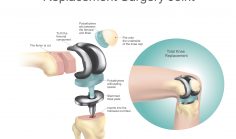Carpal tunnel syndrome should be treated as early as possible to help avoid long-term damage. If underlying causes are causing the carpal tunnel symptoms, they should be treated first.
Initial treatment typically involves:
- Resting the affected hand and wrist for two weeks or more
- Avoiding activities that can exacerbate or worsen symptoms
- Wrist splinting to help avoid further irritation and damage to the median nerve
- Using ice or cool packs to reduce inflammation and swelling
The next step in treatment is to try non-surgical treatment for symptom alleviation.
Non-surgical treatments
Drugs – Certain medications can ease the pain, swelling, and discomfort associated with carpal tunnel syndrome.
- Non-steroidal anti-inflammatory drugs. OTC medications like aspirin, ibuprofen, and other nonprescription pain relievers may ease symptoms that have been present for a short time or have been exacerbated by strenuous activity
- Cortiscosteriods (such as prednisone) can be injected directly into the wrist (by a hand specialist only) or can be taken via pill (like prednisone) to relieve pressure on the median nerve. Corticosteroids decrease inflammation and swelling, which relieves pressure on the median nerve. Oral corticosteroids aren’t considered as effective as corticosteroid injections for treating carpal tunnel syndrome.
- Lidocaine can also be injected directly into the wrist, and helps relieve pain associated with carpal tunnel syndrome. It also provides immediate, but temporary, relief.
- Orally administered diuretics (also known as “water pills”) can decrease swelling.
- Vitamin B6 (pyridoxine) supplements may ease the symptoms of carpal tunnel syndrome.
Wrist splinting – A splint that holds your wrist still while you sleep can help relieve nighttime symptoms of tingling and numbness. Nocturnal splinting may be a good option if you’re pregnant and have carpal tunnel syndrome.
Exercise – Stretching and strengthening exercises can be helpful for those whose symptoms have abated. A physical or occupational therapist, who is trained to use exercises and therapeutic massage to treat physical impairments, can help show you how to do the exercises for maximum benefit.
Yoga – has been shown to reduce pain and improve grip strength among patients with carpal tunnel syndrome.
Surgery
Carpal tunnel release is one of the most common surgical procedures in the United States—every year, more than 500,000 people in the United States undergo surgeries for carpal tunnel syndrome. Studies show that 70 – 90% of patients who undergo surgery for carpal tunnel syndrome were free of nighttime pain afterward.
Surgery for carpal tunnel is generally recommended if symptoms persist for 6 months or more. The procedure involves cutting through the ligament that presses down on the carpal tunnel, essentially turning the carpal tunnel into the carpal trench. This reduces pressure on the median nerve. Surgery is done under local anesthesia and does not require an overnight hospital stay. Many patients require bilateral surgery on both hands. The following are types of carpal tunnel release surgery:
Open release surgery. This is the traditional surgical procedure used to correct carpal tunnel syndrome. It consists of making an incision up to 2 inches in the wrist, then cutting the carpal ligament to enlarge the carpal tunnel. The procedure is generally done under local anesthesia on an outpatient basis.
Endoscopic surgery. This is a newer sort of carpal tunnel syndrome surgery, and may allow faster functional recovery and less postoperative discomfort than traditional open release surgery. The surgeon makes two incisions (about ½ inch each)—one in the wrist and one in the palm. The surgeon then inserts a camera attached to a tube that allows him or her to observe the tissue on a screen, and to cut the carpal ligament in a precise manner. Endoscopic surgery, done under local anesthesia like open-release, is effective and minimizes scarring and scar tenderness. Patients report less pain with the endoscopic surgery—likely due to the incision not involving the palm, which is rich in nerve endings. Endoscopic surgery generally allows individuals to resume some normal activities in a short period of time. It may take longer to do the operation, however, and may be more expensive.
While carpal tunnel syndrome symptoms may be relieved immediately after surgery, however full recovery from the surgery may take months. During the healing process after the surgery, the ligament tissues gradually grow back together while allowing more room for the nerve than existed before.
All surgeries carry risks. Risk factors for carpal tunnel syndrome surgeries include infection, nerve damage, stiffness, and pain at the scar. Occasionally the wrist loses strength and other complications from surgery may arise. Patients should undergo physical therapy after surgery to restore wrist strength. Some patients may need to adjust job duties or even change jobs after recovery from surgery.
Recurrence of carpal tunnel syndrome following surgical treatment is rare—with the majority of those undergoing the procedure recovering completely.











